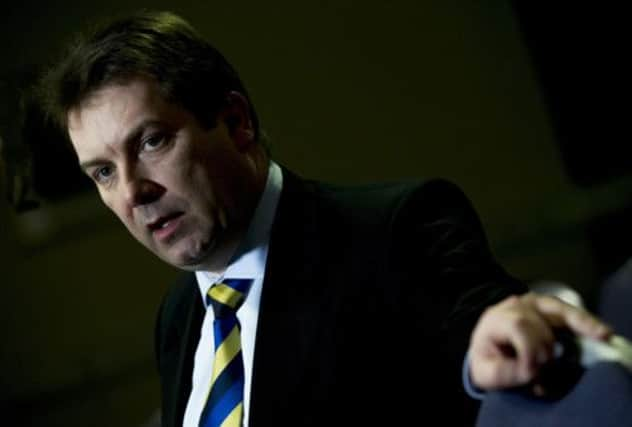SFL clubs agree on league reconstruction plans


The summit of all 30 clubs - including associate members Rangers, who do not have a vote - backed plans for a 42-club merger with the Scottish Premier League.
The discussions followed agreement by SPL clubs over revised plans, which would include a merged organisation, a 12-10-10-10 structure and top-flight play-offs.
Advertisement
Hide AdAdvertisement
Hide AdThe SFL will propose a different distribution model, which recognises the importance of the Second and Third Division clubs but will not involve the SPL giving up more money.
They have also put a different governance model to the SPL ahead of their meeting on Monday.
SFL clubs would likely be given 14 days notice of a formal vote on league reconstruction, with no date set as yet.
Chief executive David Longmuir said: “We are most definitely willing to continue with a 42-club solution to the league reconstruction process.
“We are going to work hard to bring this to fruition as quickly as we possibly can in the hope that what we deliver benefits the whole game in Scotland.
“There are a number of things that we got unanimity on today. We are going to initiate a process of due diligence to ensure we get to a place where we have a proper health check on any merged organisation to ensure there are no surprises.
“We agreed that the recommended financial distribution model that the SFL put to the SPL this week is going to take us forward and we got unanimous agreement that that was the will of the clubs.
“I know Neil Doncaster is putting it to his clubs on Monday and I hope that they look upon it as being a fair and appropriate way to spread what wealth we’ve got in the game.
Advertisement
Hide AdAdvertisement
Hide Ad“On governance, the initial governance model that was proposed, and seems still to be the favoured governance model, is not one that we wish to pursue.
“The governance model that the clubs, in unanimous fashion agreed to support, was the one that I previously put to the SPL, which is a 3-1-1-1 governance model, as opposed to a 3-2-1 governance model.
“This is a marvellous opportunity for everybody to get behind it. We are not far away.”